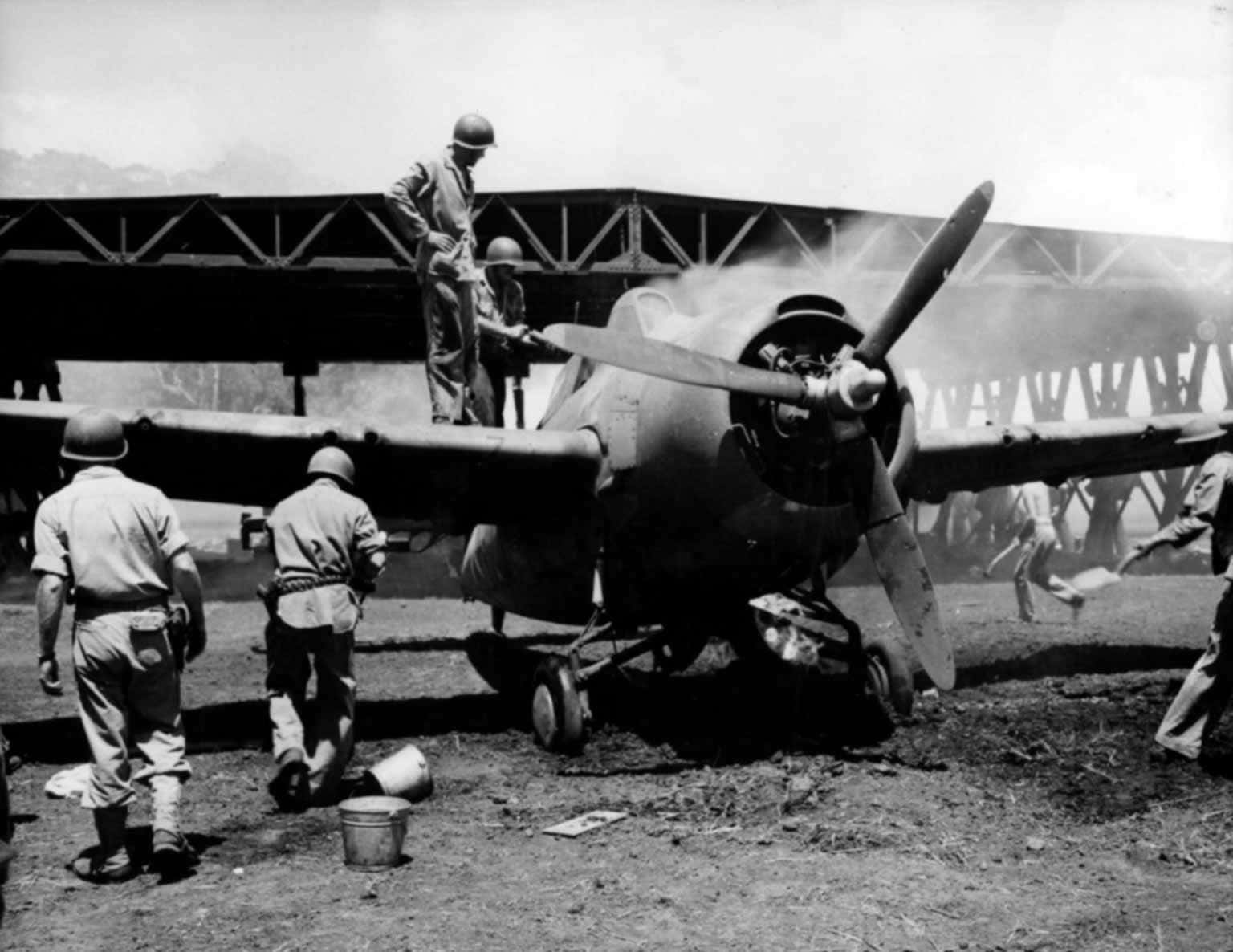American aviation technicians attempt to extinguish a burning US Air Force the Grumman F4F Wildcat fighter aircraft at a military airfield in the Battle of Guadalcanal. Pacific Theater of Operations, World War II.
Location: Guadalcanal, Solomon Islands, Pacific Ocean
Shooting time: 1942
The Grumman F4F Wildcat is an American single-seat carrier-based fighter-bomber. It was originally designed as a biplane, but went into the series as a cantilever medium wing (the requirements for speed characteristics affected). The prototype made its first flight on September 2, 1937. On August 8, 1939, the US Navy issued the first order for 78 production F4F-3 aircraft. Due to a Congressional decision to increase fleet air power during the summer of 1940, the F4F-3 production contract grew to 200 F4F-3s.
The first naval aviation squadrons to receive the F4F-3 were VF-7 based on the USS Wasp and VF-4 from the USS Ranger.
One of the problems of the Grumman F4F Wildcat, which the developers did not pay due attention to, is the landing gear release system. After takeoff, the landing gear was completely retracted with twenty-nine turns of the hand winch handle, while the pilot was primarily concerned with climbing, maintaining formation, and leveling the aircraft. The release of the landing gear was accompanied by no less interference in the control of the aircraft.
In October 1941, the US Navy began naming naval aircraft and the Grumman F4F Wildcat was officially designated the “Wildcat”.
